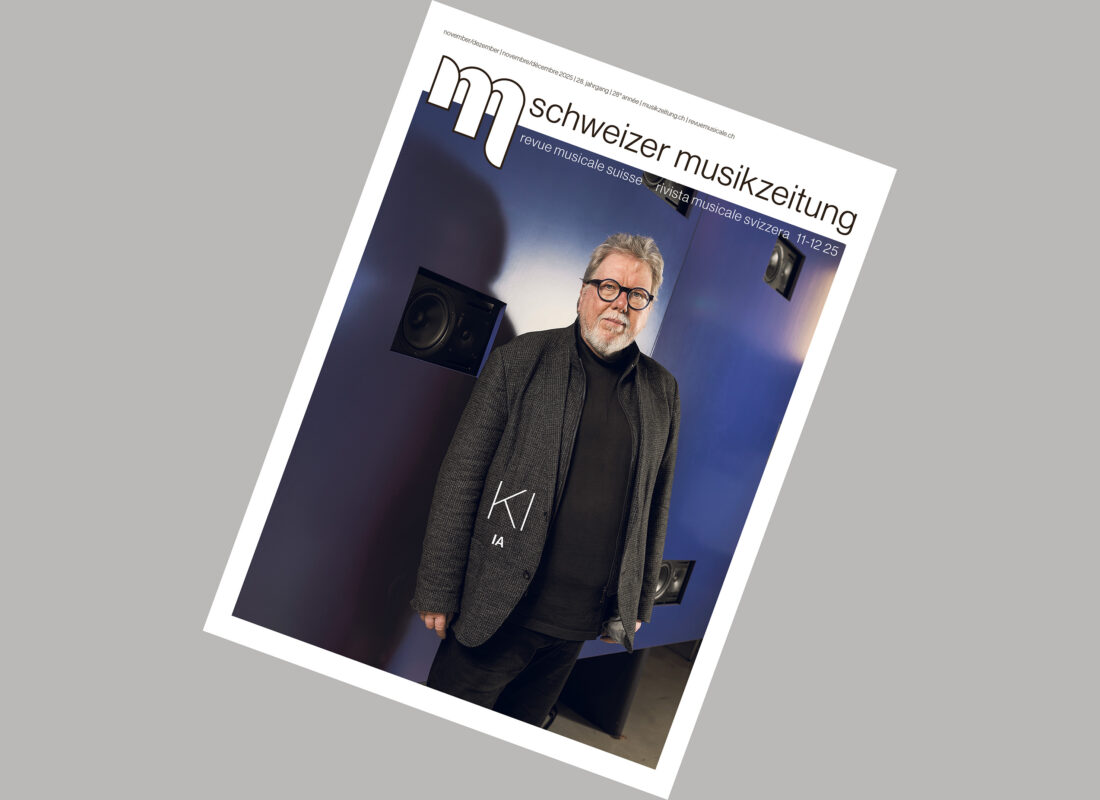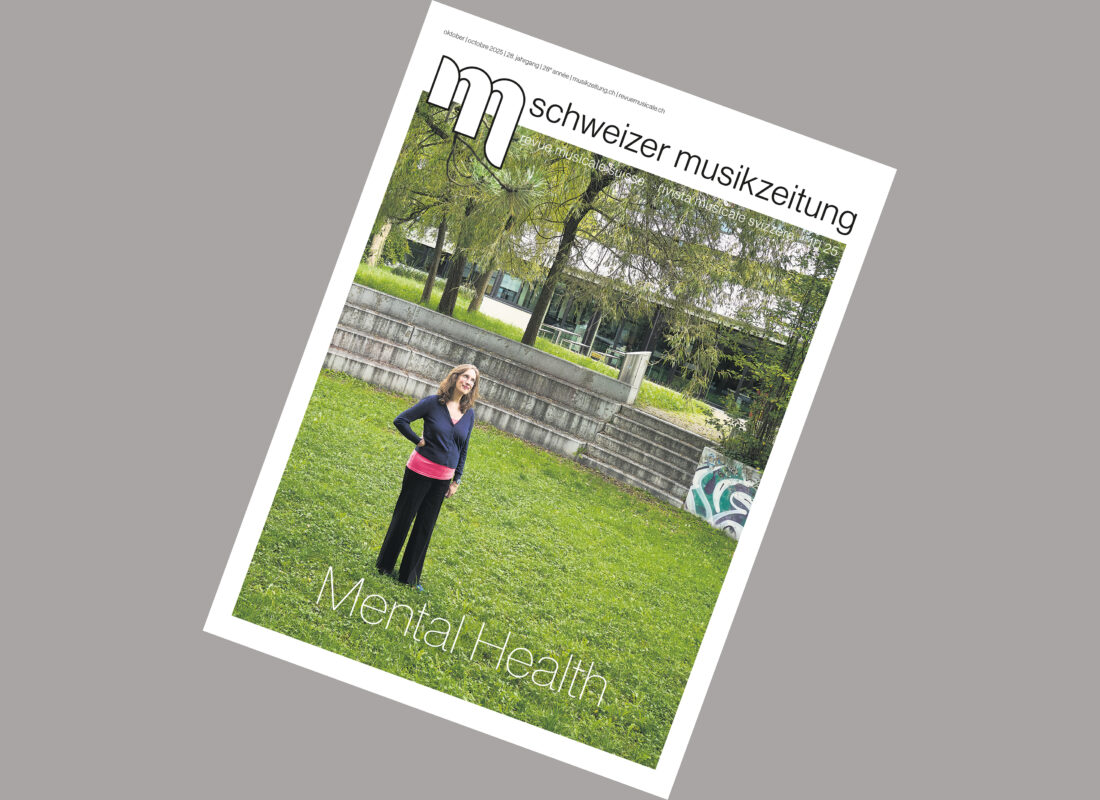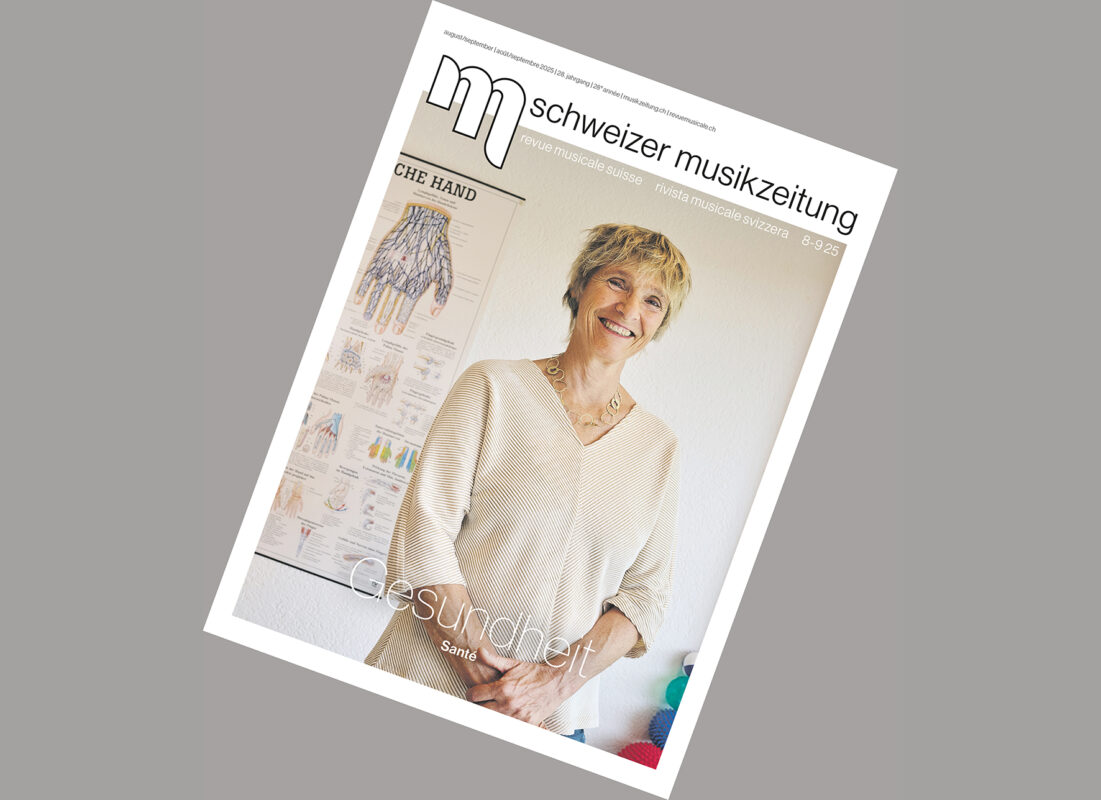One hour in the quietest place in the world
Like music, silence also has a dark side. If you are permanently exposed to it, it can lead to mental disorders. A self-experiment.

A spiral staircase leads to the basement of the State Institute for Music Research in the heart of Berlin. Here, behind the inconspicuous white-painted iron door, is probably the quietest place in the city, an anechoic chamber. It was built in the early 1980s and is now used for voice and instrumental recordings. When I open the heavy double doors, I am met by a blast of stale air. The walls are completely upholstered with skin-colored insulating wedges. The floor consists of a floating grid, which absorbs 99 percent of the noise. Not a single sound from outside gets in. No sound is transmitted through the house-in-house construction. And even if I were to scream, nobody outside would hear it.
In this "Camera silens" I want to start my self-experiment. I want to find out how pleasant or agonizing silence can be. How long will I be able to stand it here? What will I perceive? Will I have an experience that I will remember for a long time and with pleasure?
Studies in soundproof booths were carried out as early as the end of the 19th century. In the psychology laboratory at Yale University, there was a "room in a room" in which test subjects were subjected to experiments behind thick walls and double doors, shielded from the outside world. This had the advantage that they were not influenced or distracted by the test supervisors and equipment.(1) In the 1950s, experiments were carried out in the USA and Canada with sensory deprivation, the deprivation of sensory impressions. The aim was to research mental illnesses and find new treatment methods. The Canadian psychologist Donald Hebb placed his test subjects in closed rooms. Their perceptions were additionally blocked by blindfolds, soundproof headphones and gloves. The result was anxiety attacks and hallucinations. Similar experiments were carried out in Prague and Hamburg in the 1960s.(2)
The social researcher Albert Biderman wrote in the late 1950s that isolation, disorientation and stress could break people's will. His writings were used to train interrogation specialists in Guantánamo.(3)
Silence is a method of torture that is used in many countries. In its latest torture report, the human rights organization Amnesty International names isolation as one of many methods of torture practiced worldwide. Victims are held in solitary confinement for months or even years. Solitary cells are also known from prisons, for example those of the GDR State Security in Berlin-Hohenschönhausen. No daylight penetrated the cellar wing. The time of day and season were therefore indeterminable. There was also no contact with fellow prisoners. It was only possible to communicate with each other by knocking. Former inmates reported hallucinations, mental and depressive disorders, emotional dullness and extreme sensitization to sounds and visual stimuli.(4)
Back to the underground of the State Institute for Music Research. Fortunately, it is not completely dark in the anechoic chamber; a basement lamp dangles in the corner. The pressure on my ears is unpleasant, as if they were stuffed with absorbent cotton. There is also a tinnitus-like whistling. I can clearly hear the sounds of my body. Nevertheless, I also feel safe between all the foam rubber.
I have a watch with me, otherwise I would find it difficult to estimate the time. Shielded from daylight and air, it passes faster than usual. By now, 25 minutes have passed. Although it's actually impossible, I imagine I can hear noises from outside, like from a playground. Are these hallucinations already? The scratching of my pencil on the paper calms me down. A member of the institute staff peeks in briefly for security reasons. After he closes the doors again, the noise in my ears intensifies. Ten minutes later, a slight headache spreads. I can feel my heart beating. My left eyelid starts to twitch.
If no sounds can be heard, as here in the anechoic chamber, the perception of time is disturbed. There is also a rational explanation for the hallucinations. As the brain is dependent on permanent stimulation, the nerve cells discharge themselves again and again. This is how the "artificial" images are created.(5) This was also reported by test subjects who took part in the BBC trial. Total isolation took part. They spent 48 hours shielded in complete darkness in a bunker. During this time, they saw cars, snakes and even zebras. More than 60 years after the initial research, the consequences of isolation have apparently not yet been fully investigated.
We city dwellers actually long for silence. As often as possible, we try to take a break from the noise and stress. Here - in the middle of the city center - it is finally completely quiet. And it's almost unbearable.
An hour has now passed. The constant pressure on my ears, which won't go away even when I yawn, and the tinnitus beeping won't let up. I have to get out again, into reality. I heave the foam rubber upholstery and the heavy door aside, walk up the spiral staircase, past the doorman, and can finally breathe fresh air again. The sun is blinding. I squint my eyes and think: how much more daylight must mean to prisoners after days, months or years than it does to me now!
Notes
1 Cf. Schmidgen, Henning, Camera Silenta. Time Experiments, Media Networks, and the Experience of Organlessness, in: Osiris, Vol. 28, No. 1, Music, Sound and Laboratory from 1750-1980, University of Chicago Press 2013, p. 171 ff.
2 Cf. on this paragraph: Koenen, Gerd, Camera Silens. The phantasm of "extermination detention", http://www.gerd-koenen.de/pdf/Camera_Silens.pdf, p. 8 ff., accessed on 19.05.2014.
3 Cf. Mausfeld, Rainer, Psychology, "white torture" and the responsibility of scientists, in: Psychological Review, 60 (4), Göttingen 2009, p. 233.
4 Cf. Lazai, Christina; Spohr, Julia; Voss, Edgar, The central remand prison of the communist state security service in Germany as reflected in victims' reports, http://www.stiftung-hsh.de/downloads/CAT_212/ZZ-InterviewauswertungMGB-MfSONLINE.pdf, accessed on 18.05.2014.
5 Cf. Kasten, Erich, Psychological Phenomenon: When the brain goes on a trip, http://www.spiegel.de/wissenschaft/mensch/psychologisches-phaenomen-wenn-das-hirn-sich-auf-einen-trip-macht- a-795483.html, accessed on 19.05.2014.








